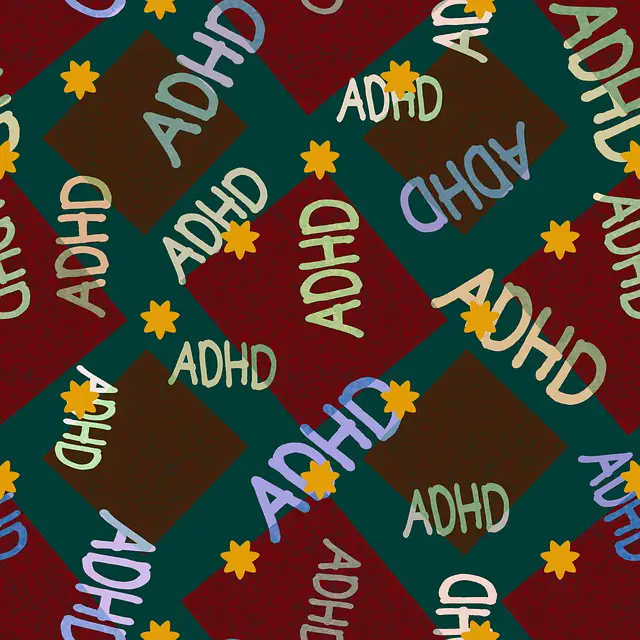Navigating ADHD Testing: A Comprehensive Guide to the Top 5 Assessment Methods

Attention Deficit Hyperactivity Disorder (ADHD) is a complex neurodevelopmental disorder characterized by symptoms of inattention, hyperactivity, and impulsivity. Proper diagnosis is crucial for individuals experiencing symptoms suggestive of ADHD to receive appropriate support and interventions. Various assessment methods are available to evaluate ADHD, each offering unique advantages and insights. Here, we explore the top five ADHD testing methods and their respective strengths.

Page Contents
A Comprehensive Guide to the Top 5 Assessment Methods
- Clinical Interviews: Clinical interviews conducted by qualified healthcare professionals, such as psychiatrists, psychologists, or pediatricians, are a cornerstone of ADHD assessment. During these interviews, the clinician gathers information from the individual, as well as from parents, caregivers, teachers, or other relevant sources, regarding the presence and severity of ADHD symptoms, developmental history, academic and social functioning, and family dynamics. Clinical interviews allow for a comprehensive understanding of the individual’s symptoms and their impact on daily life, facilitating accurate diagnosis and treatment planning.
- Behavior Rating Scales: Behavior rating scales, such as the ADHD Rating Scale-5 (ADHD-RS-5) and the Conners Comprehensive Behavior Rating Scales (CBRS), are standardized questionnaires completed by parents, teachers, or individuals themselves to assess ADHD symptoms and related impairments. These scales provide quantitative data on the frequency and severity of ADHD symptoms across different settings, helping clinicians evaluate symptomatology and monitor treatment progress over time. Behavior rating scales are valuable tools for identifying ADHD symptoms and gauging their impact on functioning in various domains.
- Continuous Performance Tests (CPTs): Continuous Performance Tests (CPTs) are computerized tasks designed to assess sustained attention, response inhibition, and impulsivity—key components of ADHD. During a CPT, the individual is asked to respond to target stimuli while inhibiting responses to non-target stimuli presented intermittently over a specified duration. Performance metrics, such as reaction time variability, omission errors (missed targets), and commission errors (false alarms), provide objective measures of attentional functioning and impulsivity. CPTs offer valuable insights into cognitive processes underlying ADHD symptoms and can aid in diagnostic decision-making.
- Neuropsychological Assessment: Neuropsychological assessment involves a battery of standardized tests that evaluate various cognitive functions, including attention, executive functioning, memory, and processing speed. These tests, administered by trained neuropsychologists, provide detailed information about an individual’s cognitive strengths and weaknesses, as well as their functional implications. Neuropsychological assessment can help differentiate ADHD from other neurodevelopmental or psychiatric conditions and inform personalized intervention strategies tailored to the individual’s profile of strengths and weaknesses.
- Brain Imaging Studies: Brain imaging techniques, such as functional magnetic resonance imaging (fMRI) and electroencephalography (EEG), allow for the visualization and measurement of brain activity patterns associated with ADHD. These imaging studies provide insights into the neural mechanisms underlying ADHD symptoms, including differences in brain structure, connectivity, and function. While not typically used as standalone diagnostic tools, brain imaging studies can complement clinical assessment by elucidating the neurobiological basis of ADHD and informing treatment approaches targeting specific brain networks or regions.
The clinical assessment and diagnosis of Attention Deficit Hyperactivity Disorder (ADHD) involve various methods and tools developed over time. While there isn’t a single “founder” of ADHD testing, the history of ADHD assessment is characterized by the contributions of numerous researchers, clinicians, and organizations. One of the most widely used clinical assessments for ADHD is the Diagnostic and Statistical Manual of Mental Disorders (DSM), published by the American Psychiatric Association (APA). The DSM provides criteria for diagnosing ADHD and guides clinicians in conducting comprehensive assessments.
Here’s a brief overview of the history and development of ADHD assessment:
- Early Observations: The recognition of ADHD-like symptoms can be traced back to the late 18th century, with early descriptions of hyperactive and impulsive behavior in children. However, it wasn’t until the 20th century that ADHD began to be formally studied and recognized as a distinct disorder.
- Landmark Studies: In the mid-20th century, researchers such as Sir George Still and others conducted influential studies on children with hyperactivity and attention difficulties. Their work laid the foundation for understanding ADHD as a neurodevelopmental disorder with genetic and biological underpinnings.
- DSM Criteria: The DSM, first published in 1952, has undergone several revisions, with ADHD being officially recognized as a disorder in subsequent editions. The DSM-III (1980) introduced specific diagnostic criteria for ADHD, distinguishing between the predominantly inattentive, predominantly hyperactive-impulsive, and combined subtypes.
- Conners Rating Scales: Developed by Dr. C. Keith Conners in the 1960s, the Conners Rating Scales are widely used behavior rating scales for assessing ADHD symptoms in children and adolescents. The scales provide valuable information from multiple informants, including parents, teachers, and individuals themselves, to aid in diagnosis and treatment planning.
- DSM-5: The fifth edition of the DSM, published in 2013, introduced updated criteria for diagnosing ADHD. It emphasizes the importance of considering symptoms in multiple settings and across developmental stages, as well as the inclusion of adults in the diagnostic process.
- Other Assessment Tools: In addition to the DSM criteria and behavior rating scales, various neuropsychological tests, continuous performance tests (CPTs), and brain imaging techniques have been developed to assess cognitive functioning, attentional processes, and neurobiological markers associated with ADHD.
While the history of ADHD assessment is marked by significant progress in understanding and diagnosing the disorder, ongoing research continues to refine diagnostic criteria and assessment methods. Collaboration among researchers, clinicians, educators, and advocacy groups is essential for advancing our understanding of ADHD and improving diagnostic accuracy and treatment outcomes.
Here’s an example of the Conners Comprehensive Behavior Rating Scale (CBRS), which includes items related to inattention, impulsivity, hyperactivity, peer interactions, and other behavioral and emotional aspects:
Conners Comprehensive Behavior Rating Scale (CBRS)
Instructions: Please read each statement carefully and indicate how often each behavior occurs. Use the following scale:
0 = Not at all
1 = Just a little
2 = Pretty much
3 = Very much
Inattention:
- Fails to give close attention to details or makes careless mistakes in schoolwork or other activities.
- 0 = Not at all
- 1 = Just a little
- 2 = Pretty much
- 3 = Very much
- Has difficulty sustaining attention in tasks or play activities.
- 0 = Not at all
- 1 = Just a little
- 2 = Pretty much
- 3 = Very much
- Does not seem to listen when spoken to directly.
- 0 = Not at all
- 1 = Just a little
- 2 = Pretty much
- 3 = Very much
- Often fails to follow through on instructions and fails to finish schoolwork, chores, or duties in the workplace (not due to oppositional behavior or failure to understand instructions).
- 0 = Not at all
- 1 = Just a little
- 2 = Pretty much
- 3 = Very much
Impulsivity:
- Blurts out answers before questions have been completed.
- 0 = Not at all
- 1 = Just a little
- 2 = Pretty much
- 3 = Very much
- Has difficulty waiting for their turn (e.g., while waiting in line).
- 0 = Not at all
- 1 = Just a little
- 2 = Pretty much
- 3 = Very much
- Interrupts or intrudes on others (e.g., butts into conversations or games).
- 0 = Not at all
- 1 = Just a little
- 2 = Pretty much
- 3 = Very much
Hyperactivity:
- Fidgets with hands or feet or squirms in seat.
- 0 = Not at all
- 1 = Just a little
- 2 = Pretty much
- 3 = Very much
- Leaves seat in situations where remaining seated is expected (e.g., in the classroom or workplace, or in other situations that require remaining in place).
- 0 = Not at all
- 1 = Just a little
- 2 = Pretty much
- 3 = Very much
- Runs about or climbs in situations where it is inappropriate (in adolescents or adults, may be limited to feeling restless).
- 0 = Not at all
- 1 = Just a little
- 2 = Pretty much
- 3 = Very much
Peer Interactions:
- Has difficulty playing or engaging in leisure activities quietly.
- 0 = Not at all
- 1 = Just a little
- 2 = Pretty much
- 3 = Very much
- Often “on the go” or acts as if “driven by a motor.”
- 0 = Not at all
- 1 = Just a little
- 2 = Pretty much
- 3 = Very much
- Talks excessively.
- 0 = Not at all
- 1 = Just a little
- 2 = Pretty much
- 3 = Very much
Note: This is a simplified example of the Conners CBRS. The actual assessment tool may include additional items and subcategories to provide a comprehensive evaluation of ADHD symptoms and related behaviors. It’s essential to use the Conners CBRS under the guidance of a qualified healthcare professional for accurate assessment and diagnosis.
In conclusion, ADHD testing encompasses a range of assessment methods, each offering valuable information for accurate diagnosis and individualized treatment planning. Clinical interviews provide a comprehensive understanding of symptoms and functional impairments, while behavior rating scales offer quantitative measures of symptomatology across different contexts. Continuous Performance Tests (CPTs) assess attentional functioning and impulsivity objectively, while neuropsychological assessment evaluates cognitive strengths and weaknesses. Brain imaging studies shed light on the neurobiological underpinnings of ADHD. Integrating multiple assessment methods allows clinicians to obtain a holistic view of ADHD symptomatology and tailor interventions to meet the individual needs of those affected by the disorder.







